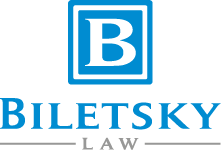To Trademark a Smell
Trademarks are more than just logos and catchy phrases…
When a trademark comes to mind, people typically think of logos, brands, and the names of products or services. But that’s not all that is capable of being trademarked. In the United States, non-conventional trademarks are capable of being registered as well. These non-conventional trademarks include colors, sounds, tastes, and scents.
For scent trademarks (or olfactory marks), it wasn’t until 1990 when the first smell was successfully trademarked. That first scent trademark was for a brand of sewing thread and embroidery yarn which contained a scent “reminiscent of Plumeria blossoms” (In re Clarke, 17 U.S.P.Q.2d 1238 (T.T.A.B. 1990).
Although there has been successful registrations (mostly on the Supplemental Register) of scent marks since then, it is not necessarily the easiest thing to trademark. In the United States, a valid trademark must not be functional and must be distinctive. Proving non-functionality requires a showing that the scent be not “essential to the use or purpose of the article or if it affects the cost or quality of the article.” (Qualitex Co. v. Jacobson Products Co., 514 U.S. 159, 165 (1995)). This essentially means that those naturally occurring smells of a product are likely functional as they perform a significant function in the existence of the product.
Take for instance the scent of perfume. The scent of a perfume is inherent to the product since it is the function of the smell that is the basis for the product. In other words, if the product has a natural scent or if the product’s scent is what makes consumers buy the product, then the scent will likely not be able to be trademarked.
Even after being able to show that the scent is not functional, the distinctive component can be another hurdle in the trademark process. Distinctiveness is one of the core concepts of trademark law and deals with how “descriptive” the mark is of the product. How distinctive the mark is depends on whether there is a relation between the mark and the product or service. For instance, if a lawn mower company was named “Lawn Mower” the name would be very descriptive of the product and therefore, the trademark would not be distinct from the product and the trademark would likely be refused.
Distinctiveness can also be acquired through use and a show of evidence that consumers are readily able to identify the product or service. As you can see, distinctiveness is not just a complex concept, but it can also be difficult to prove.
It is because of the hurdles of non-functionality and distinctiveness that trying to trademark a scent can be such a difficult task. To make matters a little more difficult, you must also provide a description of the mark in the trademark application. Descriptions of scents are difficult in that not only are scents subjective, but putting words to smells can sometimes be difficult as well.
Keep in mind however that these obstacles for scent trademarks are specific to the United States. In Europe, it is a much different story for olfactory trademarks. The Office for Harmonization in the Internal Market is the governing body in the European Union. There, the issue is not functionality, but rather that the trademark needs to be “represented graphically” and be “capable of distinguishing the goods or services of one undertaking from those of other undertakings.”
The biggest hurdle with obtaining a scent trademark in the EU is the “represented graphically” part. One court has held that if the mark can be graphically represented “by means of images, lines or characters” in a “clear, precise, self-contained, easily accessible, intelligible, durable and objective” way, the sign may be eligible for registration. Ralf Sieckmann v. Deutsches Patent- und Markenamt (Case C-273/00, [2002] ECR I-11737 (ECJ Dec. 12, 2002)).
Beyond the United States and the EU, the status of scent trademarks vary from country to country and before attempting to trademark a smell, it is best to consult an intellectual property attorney.
For more information on scent trademarks or for assistance with your trademark, contact Biletsky Law.






